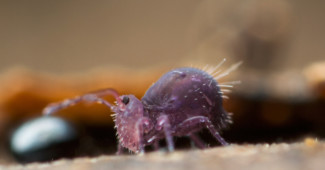Do mosquitoes bite in clusters? Yes, sometimes a single mosquito bites a bunch of times around the same location. I often get a cluster of bites on my feet. The extremities ( hands and feet) are the most likely location for many bites, although anywhere on the body is possible.
Keep in mind, however, that many insect bites look similar to mosquito bites and it’s easy to get them confused. For example, mites and bed bugs also bite in clusters and have a similar appearance. If the cluster of bites happened at night while sleeping, this is a possible explanation. If you mhave dogs in your house, fleas can bite people, too. But mosquitoes are notorious for biting at night, as well.
In this article, we take a look at why mosquitoes bite in clusters, and how best to treat the associated inflammation and itch.
How to treat a cluster of mosquito bites
The allergic reaction from many bites adjacent to each other can be intense. The whole area around the cluster of bites can become inflamed and fiercely itchy. In the most extreme cases, a red ring may form around the bites.
The urge to scratch the inflamed area can be almost irresistible. But the worst thing you can do is pop a mosquito bite, or scratch it hard enough to break the skin. Once it bleeds, a mosquito bite is vulnerable to infection. It may also leave a permanent scar.
No matter how insufferable, remember that mosquito bites go away on their own in a short time. Within an hour, the most intense itchiness usually dissipates. In the meantime, there are some over-the-counter medications that are great at alleviating mosquito bite symptoms.
Hydrocortisone cream and Benadryl are the best OTC treatments for mosquito bites. Both are applied topically to the skin. Cortisone is a steroid that suppresses inflammation and pain, while Benadryl is an antihistamine that counteracts allergic reaction (the cause of a mosquito bite). It’s a good idea to keep both of them in your medicine cabinet for the desperate time a marauding mosquito causes misery.
If you don’t have either of these, you can try this mosquito bite hack that temporarily removes the itch: Marking a mosquito bite with an X with your fingernail can give temporarily itch relief. (Follow the link for detailed instructions and explanation). Again, make sure not to press hard enough to break the skin, though.
Preventing more bites
When you have a cluster of mosquito bites, take steps to protect yourself from more. Mosquitoes can bite through clothes, but covering bare skin makes it much more difficult for them. If you are in bed, pull a sheet or blanket over your entire body.
Apply mosquito repellent all over the cluster of bites to protect the area. Do not do this, though, if there is any broken skin. If there is bleeding, clean the area with soap and water. Then apply an antibacterial ointment and cover with sterile gauze to protect until it has healed over.
Why do mosquitoes bite in clusters?
Sometimes it takes multiple bites for a mosquito to get fully satiated with a blood meal. The mosquito injects an anticoagulant to keep the blood flowing, but the flow may still slow down as the body naturally combats the bite. By moving to a nearby location and biting again, the mosquito obtains a fresh supply of blood.
Another reason is that sometimes a mosquito bites in a location with insufficient blood flow, and has to try again. Mosquitoes use a complex algorithm of signals to determine where and when to bite. If it bites in a nonoptimal location, it may try again close by.
Mosquitoes often bite in clusters on the top of the feet and heel. Feet are ideal feeding locations for mosquitoes for a few reasons. One, the feet are the most distal location on the body, making it least likely that the mosquito will be swatted and killed while feeding there.
Secondly, the top of the foot has only a thin layer of skin. It’s easy for a mosquito to penetrate and obtain a blood meal there. And finally, a wide range of bacteria tend to live on the feet, which is attractive to mosquitoes.
Get Rid of Pesky Mosquitoes
 |  |  |  |
| Handheld Mosquito Zappers | Mosquito Sprays | Ultrasonic Mosquito Repellers | Electric Mosquito Zappers |
Photo: “Dicyrtomina novazealandica” by andybadger is licensed under CC BY-SA



Leave a Reply